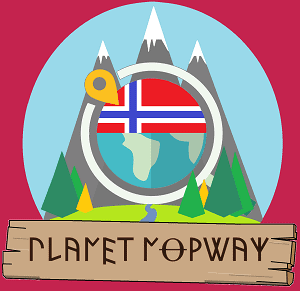Norway does not have an officially designated national animal, however, the Norwegian public considers the moose, also known as the elk, to be Norway’s national animal.
Seen as a majestic animal representative of the country’s rugged, natural beauty, the decision to crown it as the national animal was done by popular vote on the Norwegian national radio.
Other animals considered to be a national include the lion, which is featured in the Norwegian coat of arms, a historical tradition shared by many other northern European nations. Continue reading to learn more about why this is, and why the majority of the public considers the moose to be Norway’s national animal.

The Moose: A national symbol
The moose is the largest land animal in Norway and the largest member of the deer family. They have a powerful, yet long and slender body, long legs, and a large, bulbous nose. Its coat is typically a dark brown. Males have large palmate antlers, which are used for mating rituals and defense against predators. They also have a large hanging skin flap below their chin, known as a dewlap.
They are generally solitary herbivores, feeding on a variety of plants, including leaves, twigs, and bark. They are found throughout much of the boreal forest region of the world. In Norway, the population is estimated to be between 150,000 and 200,000 individuals. They are found throughout most of the country, with the highest concentrations in the southeastern regions.
The moose is well-adapted to living in the cold Norwegian climate, with a thick coat of fur that keeps it warm during the winter months. Its long legs allow it to easily navigate through deep snow during winter, and they are excellent swimmers, able to cross rivers and lakes with ease as they trek across the Norwegian forests in search of food.
While they tend to shy away from towns and cities, it is not uncommon for people to get the moose as a visitor in their gardens in rural areas. As I commute with out of Oslo for work in the early morning, I frequently see them in the fields as I pass by.
From Folklore to Hunting Tradition: The Moose in Norwegian Culture
Known to Norwegians as the king of the forest, the largest member of the deer family has a special place in Norwegian culture. It has played a significant role in Norwegian culture and folklore for centuries.
In Norwegian folktales, the moose is often depicted as a strong and noble creature, and its antlers have been used as a symbol of strength and virility.
For the Vikings, their fur was highly sought after as it was said that warriors dressed in moose skins were supposed to be invulnerable. A separate rune, elgr, was also named after the moose and is said to have had protective power.
The moose is an important game animal in the country and hunting it has been a popular pastime for centuries. Their meat is lean, with a texture that is similar to beef, and is revered for its wild flavor which is considered a delicacy in Norway.
Therefore, it was not surprising that the moose was chosen as Norway’s national animal in a poll on national radio in the 1960s.
The show “Nitimen” allowed listeners to suggest and vote for what should be considered the national dish, bird, animal, and so on. After collecting several suggestions, the moose won the poll and became the unofficial national animal, a title that has only grown stronger over the years.
An example of this is the 33-foot (10 m) tall moose statue in Stor-Elvdal county in central Norway, which held the record for the tallest moose statue in the world after a fierce battle with a Canadian moose statue. Unfortunately, the Canadians were not able to accept this and decided to add some height to their statue.
The moose and moose symbols are also frequently featured on various tourist souvenirs, often alongside mythical Norwegian trolls. One example is the moose warning road sign, which can be found throughout the country to warn drivers of the presence of moose in the area and to remind them to be alert for moose crossings.
The Norwegian coat of arms: The royal lion
The royal lion is another important symbol in Norway and is featured on the country’s coat of arms. It is not, however, considered the national animal of Norway.
The lion on the coat of arms is depicted as a golden lion on a red background, with a golden crown on its head and holding a golden axe. It represents the country’s royal history and is used on official documents, buildings, and other official occasions.
Due to restrictions on publishing the coat of arms, I am not able to provide a picture of it here, but if you want to see what it looks like you can see a picture of it on Wikipedia.
Norway is not the only country to have a lion in its coat of arms; it is also found in the coats of arms of Sweden, Denmark, England, and the Netherlands. This is because the lion was traditionally seen as a symbol of royal power, particularly in countries with Norman influence.
The tradition of using royal animals as national symbols is also found in other European countries. In central European countries such as Germany, Austria, and Poland, the eagle is in their coat of arms. In eastern Europe, the double-headed eagle, a legacy from the old Eastern Roman Empire, is often featured on the national coat of arms.
Norway’s national bird
Along with most other countries, Norway has also selected a national bird. Again the decision was made through a poll on national radio where the people crowned the white-throated dipper as Norway’s national bird.
Sources
National animals – Wikipedia (Norwegian)
Norway says its moose statue is tallest – The Washington post
